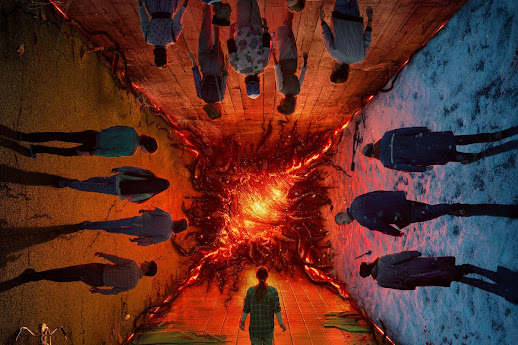 |
| [This post will contain spoilers for Stranger Things up through season 4] |
The best monsters are not merely a big sack of hit points you hack-n-slash your way through because of a random encounter table. No, they're something more. They have qualities possible only through the conceits of fantasy. They challenge your brain just as much as your stats and dice. They stick in the mind. They're not just a one-and-done encounter. They're grounded in the world and its rules, and can't be understood merely with numbers. And maybe most of all, they're robust enough that reckoning with them is the whole adventure, or at least could be the whole adventure.
A very popular piece of advice in the OSR is "Just Use Bears." The basic argument is that, "monsters which don't have elaborate special abilities could probably be represented sufficiently with the stat block of a bear, since the minutiae of individual stats rarely has a significant enough impact on a fight to be worth the trouble of always having a custom stat block prepared."
As practical advice, this is good. But in spirit, I feel like it's a concession. A failure. If you're using a monster that could be substituted with a bear, then maybe you shouldn't even have that monster at all. Monsters should be special. You could be running a better game where you never use that advice. Not because it's bad, but because you've made monsters good enough that the advice isn't applicable.
To illustrate what I'm calling "puzzle monsters," we're going to go through the monsters used in the Netflix show Stranger Things as well as some examples I've created for my own adventure scenarios. After that, I'll walk you through the steps I take to create a puzzle monster, and other considerations that help a lot in the creative process.
